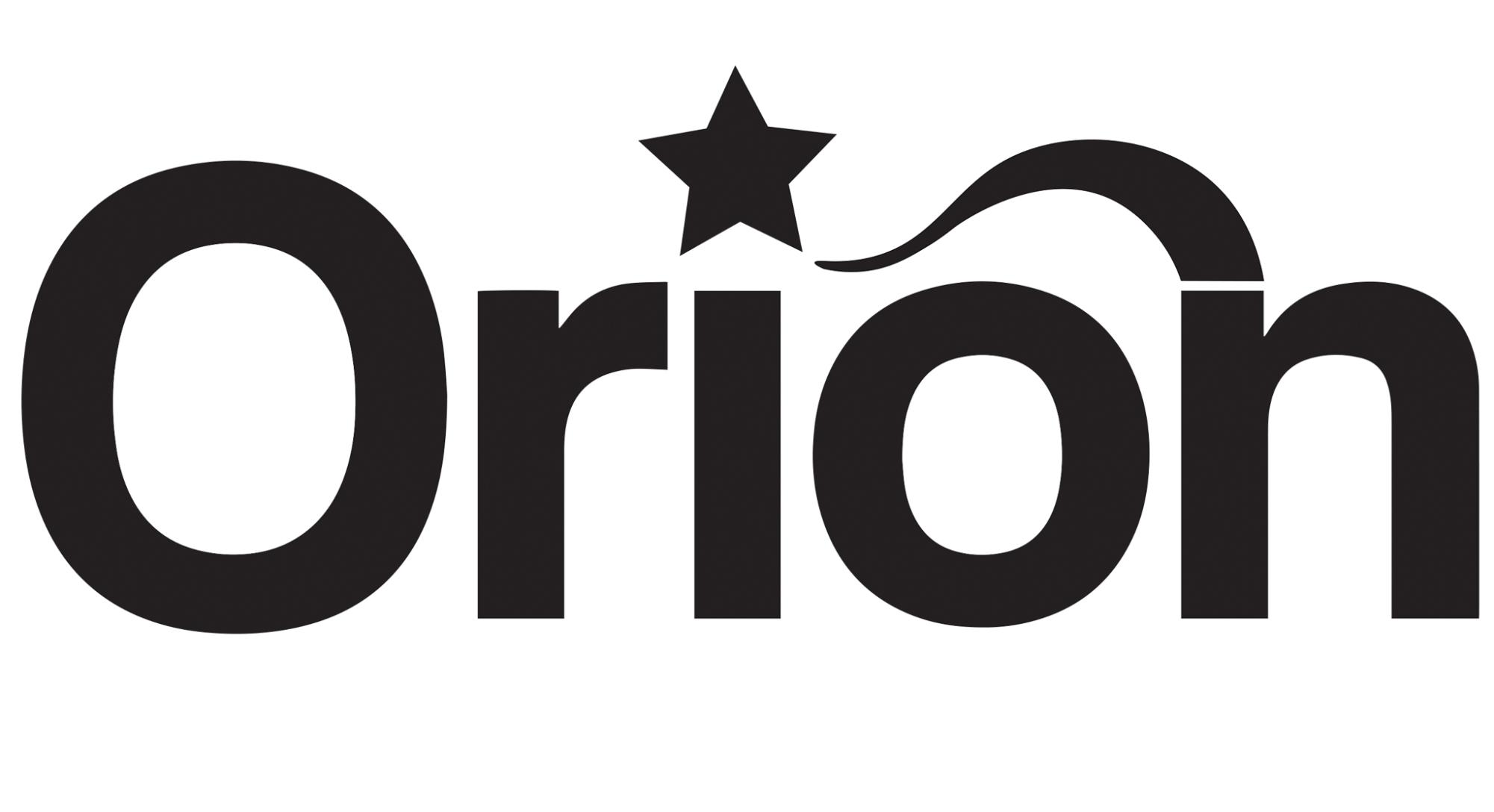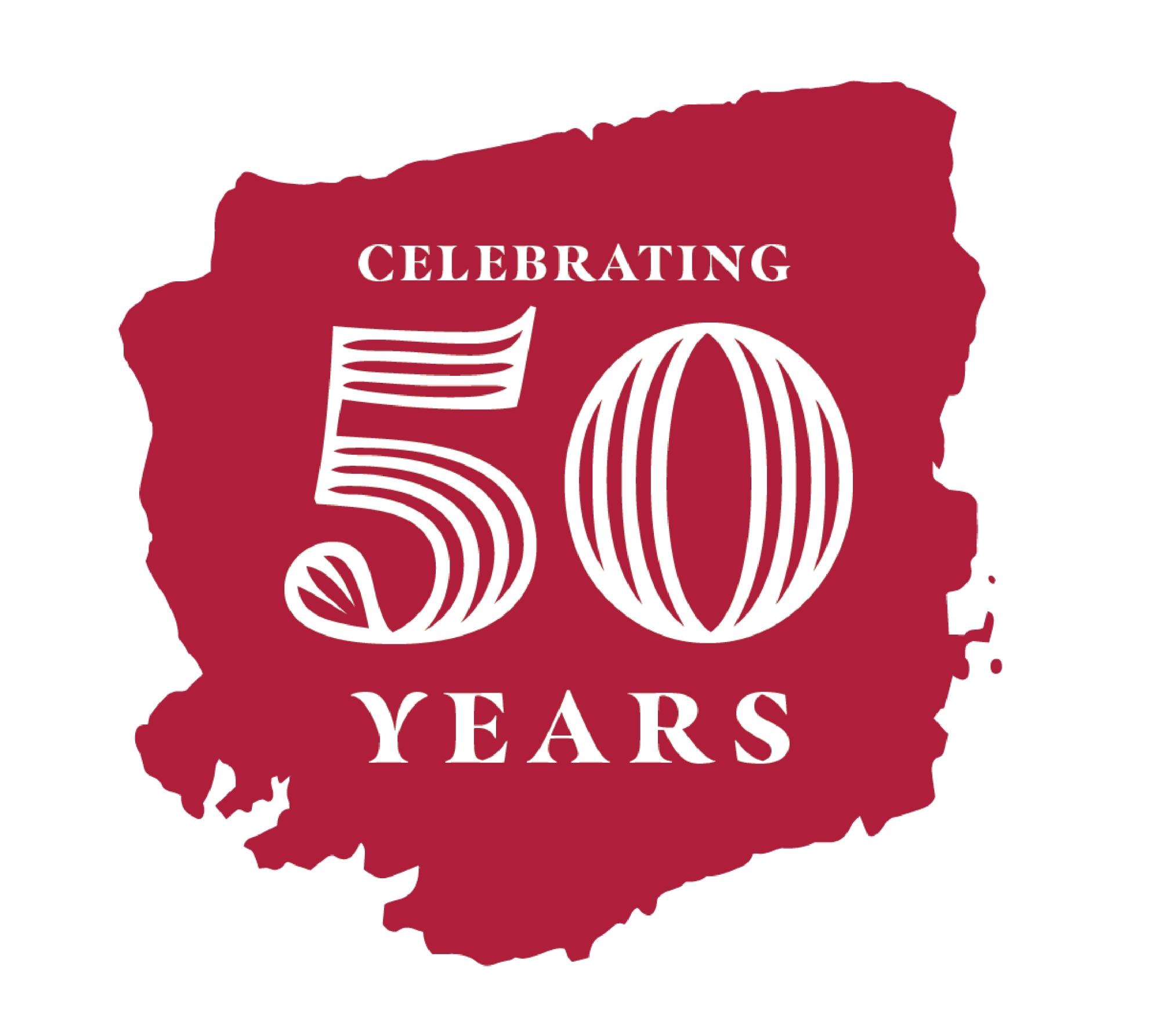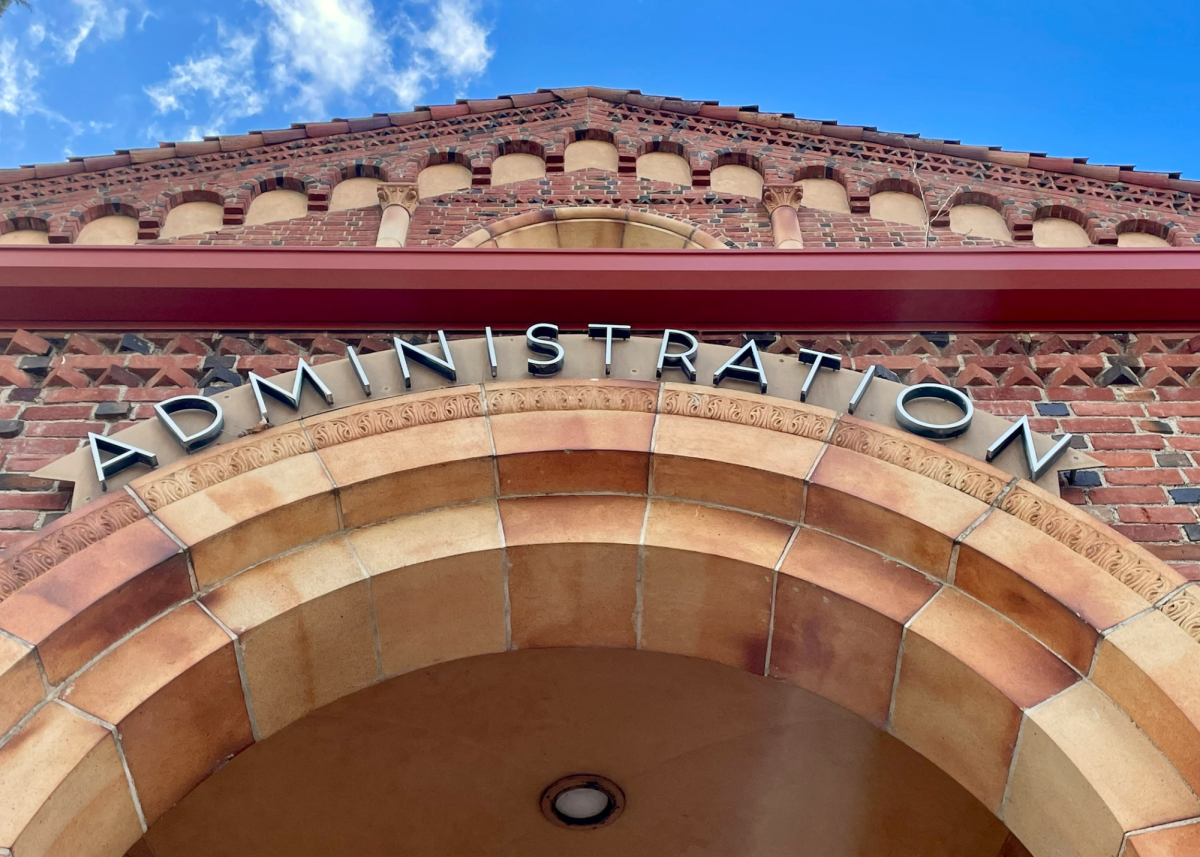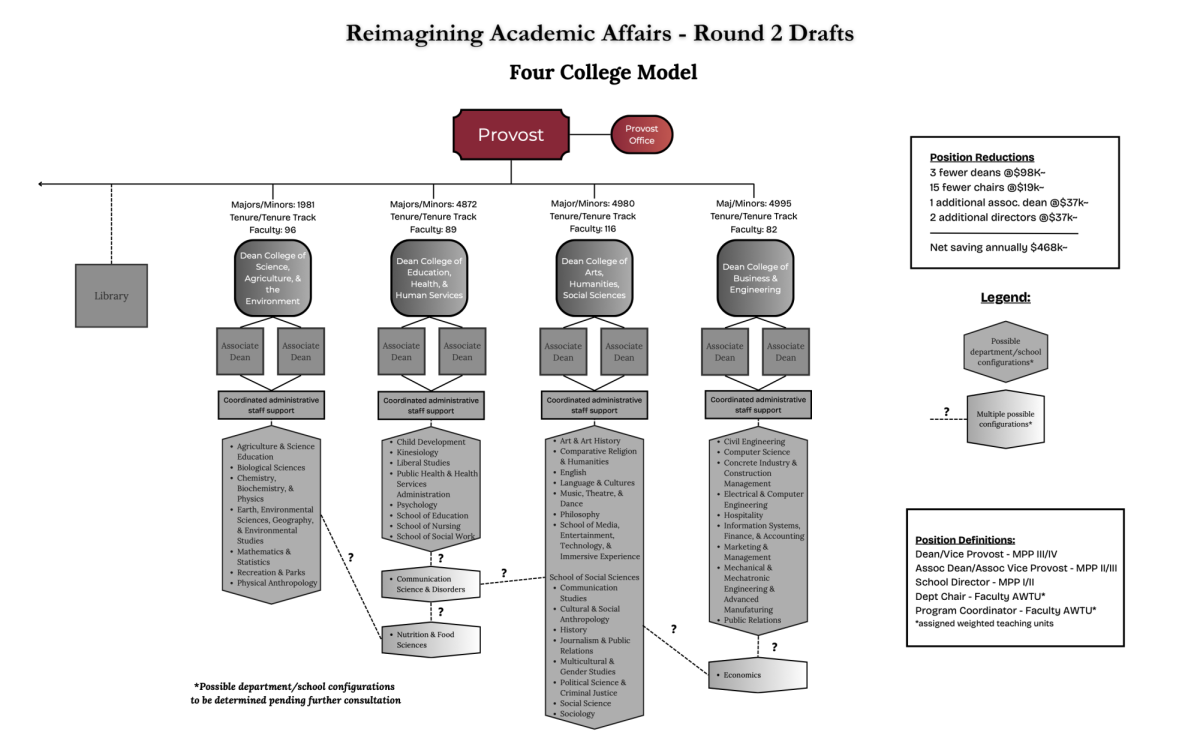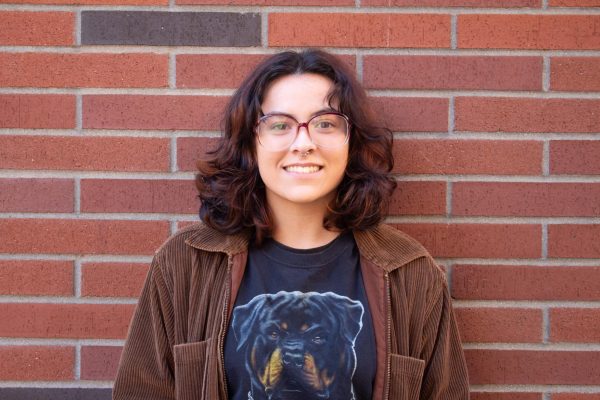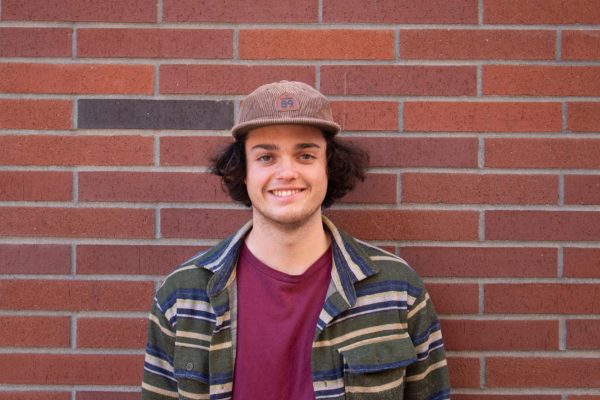The second round of models for the restructuring of academic affairs was presented via webinar hosted by Provost Leslie Conrick Tuesday morning. The models featured more data points including cost, annual net savings, and potential department and school configurations.
The Reimagining of Academic Affairs website was updated Thursday – three days after the webinar – with both a recording of the webinar, the two academic structure models and one model for the Academic Affairs Administration. The reason for the delay in the website update was captioning the recording for accessibility purposes according to Holly Ferguson, executive assistant to the provost.
Included with the models was a legend, position descriptions and reductions and projection of the annual net saving which the previous rounds of models lacked.
However, there was a discrepancy in the Zoom models presented on Tuesday compared to the models released Thursday. Ferguson said the reason for this discrepancy was an issue in the initial math done by Cornick.
As of 6:15 p.m. Friday, the link to the models is broken. Earlier on Friday the models were accessible.
- Model One – Four College Model
-
- Change from $647,000 annual net savings to $468,000
- Change of about 28%
- Change from $647,000 annual net savings to $468,000
- Model Two – Five College Model
-
-
- Change from $818,000 annual net savings to $527,000
- Change of about 36%
- Change from $818,000 annual net savings to $527,000
-
- Academic Affairs Administration Model
-
- Change from $105,000 annual net savings to $116,000
- Change of about 11%
- Change from $105,000 annual net savings to $116,000
Cornick expected the annual net savings to be about $1-2 million. However each path will not fulfill that goal.
- If the Four College Model is chosen with the Academic Affairs Administration Model
- Annual net savings: $584,000
- If the Five College Model is chosen with the Academic Affairs Administration Model
- Annual net savings: $643,000
Along with the new models, Cornick explained their plan for potential positional savings by moving people in positions such as department chairs to instructional faculty.
Cornick calculated the positional savings by taking the average salary of each position – for example, dean, associate dean, department chairs – and subtracting it by the average salary of a tenured professor. In the webinar Cornick said “averages of lecturers” however the numbers given support that she was using math for average salary of a tenured professor.

According to the recently- updated Frequently Asked Questions section on the Reimagaining website, most of the savings will likely come from the reduction of higher level positions such as deans.
Deans and chairs will return to the classroom setting, resulting in cost savings for the university. In the proposed models, directors and associate directors seem to be recommended to replace some positions.
This reorganization of faculty will significantly affect lecturers, who will not be offered as much work as they had previously, or their contracts will not be renewed.
Faculty continually express in town halls and expos their fears about the increase of workload due to the loss of lecturers.
Cornick has also faced targeted questions surrounding transparency, something that she claims to be taking into account moving forward into Round Two.
Cornick wanted to honor the Special Action Team’s recommendation of having departments self-select into their schools or colleges; the feedback PAC received showed that many people were having issues “envisioning themselves” within the potential structures. To circumvent this, PAC decided to put in potential department configurations. However the structure is not official and just a template.
There have been proposals for what this process would look like such as the affinity mapping system that Michael Coons, an associate professor, presented at the March 3 Town Hall meeting. The information is no longer available on the reimagining website.
Models Overview
Four College Model – Net saving $468,000
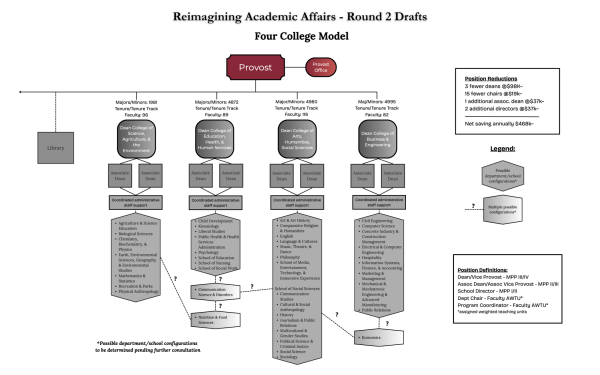
Model One shrinks the number of colleges from our current seven down to four consisting of:
- College of Science, Agriculture and the Environment
- College of Education, Health and Human Services
- College of Arts, Humanities and Social Services
- College of Business andEngineering
The position reductions include:
- 3 fewer deans
- 15 fewer department chairs
However this model adds three new positions including:
- 1 additional associate dean
- 2 additional directors
Five College Model – Annual net saving $527,000
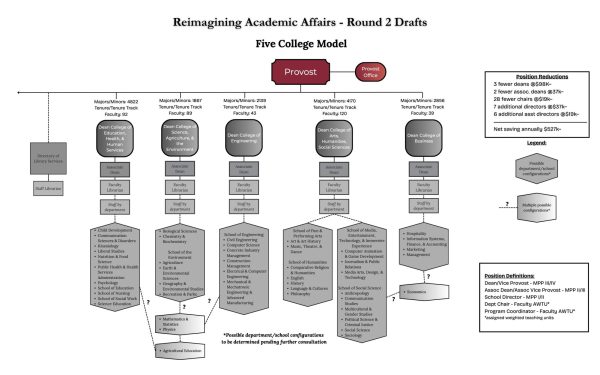
Model Two has five colleges consisting of:
- College of Science, Agriculture and the Environment
- College of Education, Health and Human Services
- College of Arts, Humanities, and Social Sciences
- College of Business
- College of Engineering
The structure of faculty support in this model comprises colleges with one dean, one associated deans, one faculty librarian and a division for staff by department.
The position reductions include:
- 3 fewer deans
- 2 fewer associate deans
- 28 fewer chairs
However this model adds new positions including:
- 7 additional directors
- 6 additional assistant directors
Academic Affairs Administration- Annual net savings $116,000
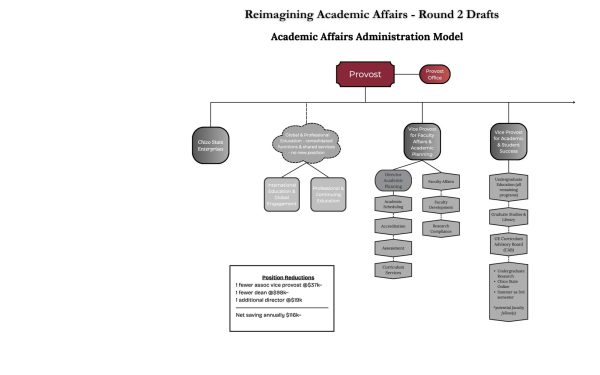
This model includes:
- Chico State Enterprises
- International Education and Global Engagement and the Professional and Continuing Education division will operate together under the same umbrella using the consolidated functions and shared services
- Two vice provosts will head two different divisions:
- One vice provost will head Faculty Affairs and Academic Planning
- One vice provost will head Academic and Student Success
The position reductions include:
- 1 fewer associate vice provost
- 1 fewer dean
However this model adds new positions including:
- 1 addition director

What does MPP mean?
People in the management personal program – listed as MPP – “serve at the will of the campus President or the Chancellor,” according to Title 5 Article 2.2 of the California Code of Regulations.
“Right now, a person who is the chair of a department or the coordinator of a program, or the director of a school – because we do have schools right now – those three kinds of people are faculty members,” Shawn Brackett, advising and retention specialist in the College of Communication and Education and SAT member said. “They are professors in their areas and they are members of the faculty union; the CFA.”
However, future directors of schools will be listed under MPP, and therefore not be a part of the CFA or have tenured protections.
Chairs – who are in the CFA or have tenured protections – returning to classrooms will potentially be replaced by directors, which will fall under a MPP position.
What has changed from round one?
According to Cornick, she read almost 300 individual feedback responses from Round One and the PAC used ChatGPT to organize both positive and negative themes to take action on. Cornick, PAC and some deans used the feedback to distill the previous models down to two.
After intense outcry from the campus community over the exclusion of the word “science” within the proposed college that seeks to bring together agriculture and natural sciences, the college’s title now includes all three in both models.
The new models also abandon the professional programs cluster presented in previous Models Two and Three from Round One.
These new models do incorporate three of the four structural recommendations that the SAT purposed such as:
- The formation of a college centered around agriculture, natural sciences and the environment
- This can be seen in both models as the College of Science, Agriculture and Environment
- The formation of a college centered around health, wellbeing and human services
- This can be seen in both models as either the College of Education, Health and Human Services
- Departments should be able to self-select their college affiliation if structural recommendations are adopted
In an email sent out by nine members of the SAT that circulated through faulty late February listed out some concerns on the first round of models.
Their first concern on the exclusion of humanities and sciences in the names of the colleges was addressed.
However, other SAT concerns do appear in the current models:
- The unequal distribution of faculty and student numbers in each college
- The creation behavior and social sciences and humanities and fine arts mega college
- A four or five college model “exacerbate” issues that a six college model doesn’t
There will be four expos with two student-only sessions. The expo dates are as follows:
- Monday, April 7, 1-2:30 p.m. Open to students, faculty and staff in Selvester’s 100
- Tuesday, April 8, 1-2:30 p.m. Open to students, faculty and staff in Selvester’s 100
- Tuesday, April 8, 4-5:30 p.m. Students-only session in Selvester’s 100
- Wednesday, April 9, 5:30-6:30 p.m. Students-only session Colusa 100
The Orion wants your feedback on the models presented and how the community feels about the efforts of the reimagining initiative. Please fill out this Google Form.
Nadia Hill and Chris Hutton can be reached at orionmanagingeditor@gmail.com


